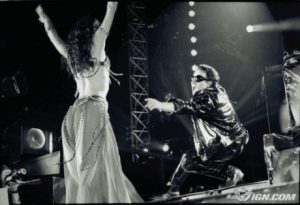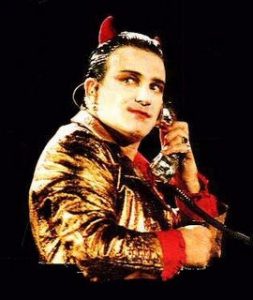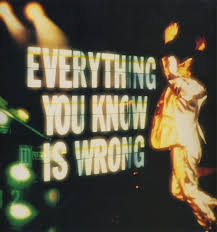A genre parody is a criticism of a certain culture or technique, executed using the medium of that genre, a work that is “ participating in the codes of a genre at the same time that they are self-consciously parodying those codes.” Genre parodies often dial up the common tropes of the targeted genre to 11 in order to make the viewer painfully aware of what is being targeted and criticized.
An excellent example of genre parody would be U2’s Zoo TV tour, done after their massively successful album Achtung Baby. The Zoo TV tour took the materialistic rock star lifestyle and criticized it through the tour’s absurd, maximalist production and dark visuals and rhetoric.
During the development of Achtung Baby, U2 were faced with a dilemma. They had risen to fame by producing earnest, socially conscious music that dealt with heavy topics such as drug addiction and warfare. This music was massively popular, and led to them becoming one of the biggest bands in the world. All this commercial success was often at odds with the ethos of the band, and led to an identity crisis of sorts leading up to Achtung Baby. Instead of continuing to be hypocritical, or rejecting fame entirely, frontman Bono says that “instead of running away from the contradictions, I should run into them and wrap my arms around them and give ’em a big kiss.”

While this embrace of contradiction was apparent on Achtung Baby, it became obvious during the Zoo TV tour. The set design was maximalist in a way U2 tours had never been before- cars hung from the ceiling acting as spotlights, and a belly dancer appeared during “Mysterious Ways.” Bono also adopted a series of characters onstage, such as The Fly and MacPhisto. The Fly was Bono’s take on the traditional rock star, and donned a leather jacket and sunglasses that have become a central part of his image. MacPhisto was Bono’s take on the devil, and was intended to represent the temptation and sin that goes hand in hand with the rock star lifestyle. While this maximalism may have been a criticism, it was also an embrace. The sunglasses that Bono donned to mock other rock stars have not left his face, in one form or another, since. Bono himself said about his parody of the rock star lifestyle: “You actually find out that you like some of the bullshit. I mean, some of it’s fun.”

The Zoo TV tour as a parody was also an exercise in postmodernism. The criticism of the rock star lifestyle while simultaneously embracing it indicated U2’s acceptance of their place in pop culture. Even the imagery of the tour was unquestionably postmodern. Giant projectors set up on the stage projected different messages to the audience, the most famous being the simple statement EVERYTHING YOU KNOW IS WRONG. This statement, along with several other aspects of the tour, challenged master narratives, such as the narrative that materialism is universally wrong. Sure, the rock star lifestyle may be materialistic and sinful, but, as Bono said, “some of it’s fun.”

